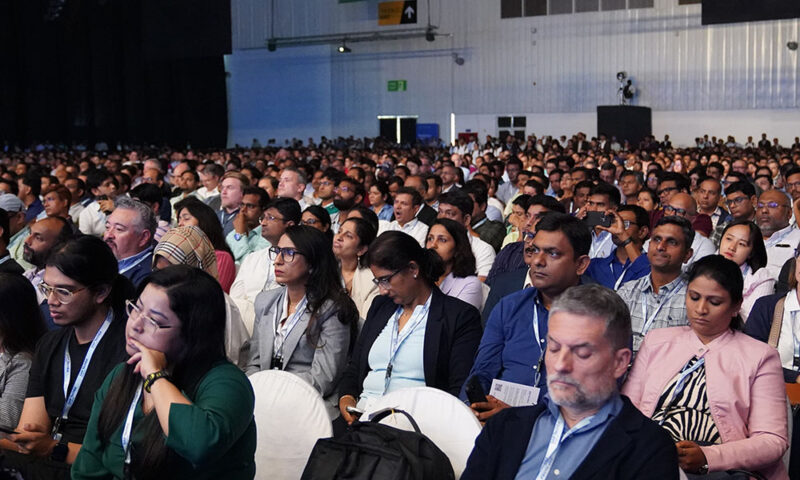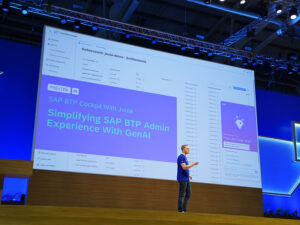
SAP unveils innovations in Generative AI Application Development capabilities in the AI era
At the recently concluded, mega, well-attended and successful SAP TechEd event held in the Bengaluru, India’s IT capital, SAP announced a comprehensive series of generative AI and Vector Database capabilities and advancements aimed at empowering developers of all skill levels to supercharge their businesses in the age of AI.
“Today’s dynamic technology and business landscape means every developer needs to be an AI developer,” affirmed Juergen Mueller, Chief Technology Officer and Member of the Executive Board of SAP SE.
“The innovations we’re launching at SAP TechEd, from AI-infused pro-code tools to a one-stop shop to create generative AI extensions and applications on SAP Business Technology Platform, supporting the developers at the heart of the AI revolution and providing them with resources they need to transform the way businesses run,” he further asserted.
As organizations aim to derive business value from generative AI, effective collaboration between professional and citizen developers is essential. SAP is launching SAP Build Code solutions, which streamlines cooperation with business experts who use the low-code SAP Build solutions launched at SAP TechEd in 2022.

AI-powered tools
Uniquely built for SAP applications and the SAP ecosystem, SAP Build Code solutions offer AI-powered productivity tools for developers and are optimized for Java and JavaScript development. SAP Build Code also draws on the power of SAP’s new generative AI copilot Joule – the copilot that truly understands business – to further boost productivity, embedding code generation capabilities for data model, application logic and test script creation.
Good data is the foundation of good AI, and SAP HANA Cloud continues to pioneer innovation in the data space by adding new vector database features to its multi-model offerings at no additional cost. Vector data stores manage unstructured data – such as text, images or audio – to provide long-term memory and better context to AI models.
This makes it easy to find and retrieve similar objects quickly. For example, users can search for suppliers based on the language in their contracts to examine payment history and trace individual orders. These powerful new vector database features enhance interactions between large language models and an organization’s mission-critical data.
Data insights
The innovation helps put SAP developers at the forefront of delivering radically new levels of data insights within a secure, private framework that uses industry-specific customer data to reduce hallucinations.
AI Foundation on SAP BTP (Business Technology Platform), a new one-stop-shop for developers to create AI- and generative AI-powered extensions and applications on SAP BTP, will further help increase developers’ impact and efficiency. AI Foundation includes everything developers need to start creating business-ready AI tools on SAP BTP – from ready-to-use AI services and access to the top large language models to vector database capabilities and AI runtime and lifecycle management.
The rapid pace of technological innovation has driven up global demand for skilled developers – and SAP is increasing its learning opportunities in tandem. As part of a commitment to upskill two million professionals by 2025 and complement free AI learning content already available, SAP launched at the venue the new role-based certification and free learning resources for back-end developers using the ABAP Cloud development model.
Learning resources
The two new learning resources covering ABAP development tools on SAP BTP and SAP S/4HANA are available on the SAP Learning site. They are designed for agile and cloud-compliant business transformation, providing developers with skills to build cloud-ready extensions that are aligned with SAP’s clean core strategy.
SAP also joined the Stanford HAI (Institute for Human-Centred AI) Corporate Affiliate Programme. Researchers and engineers at SAP will work with the Stanford academic community, including research faculty and students, on the intersection of generative AI and business.
